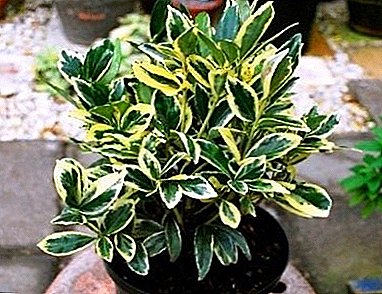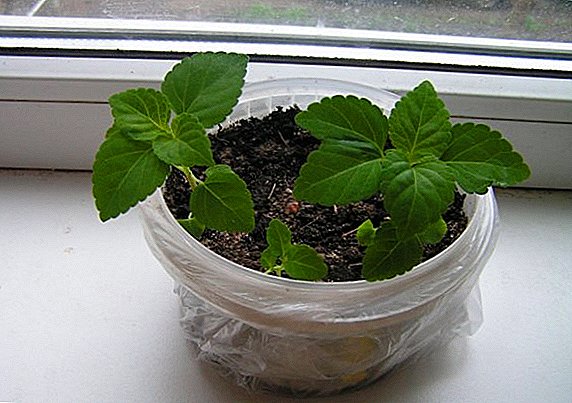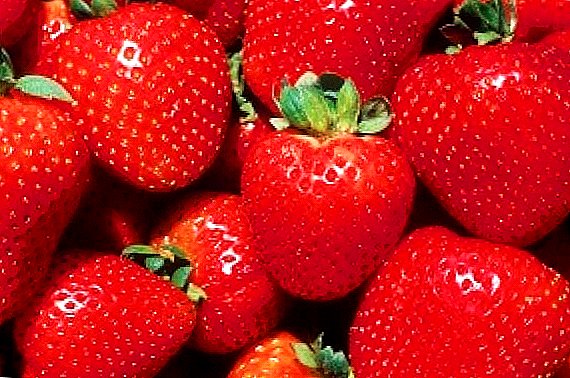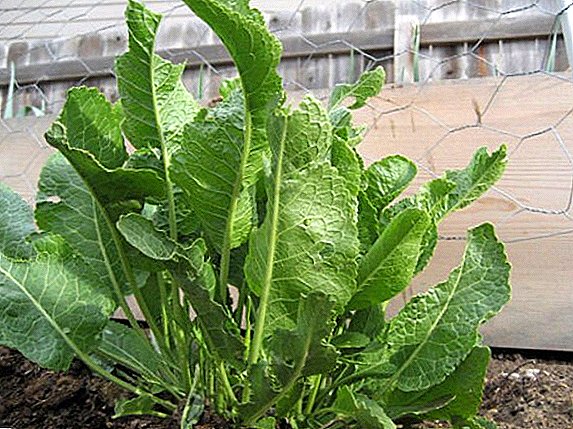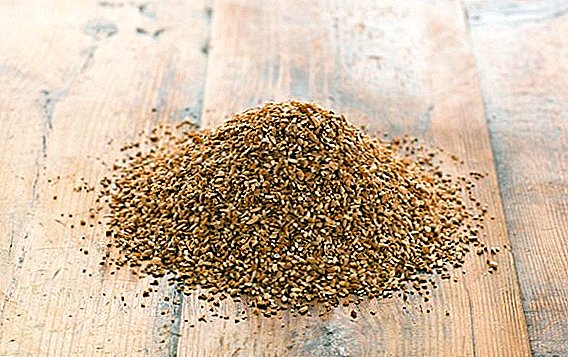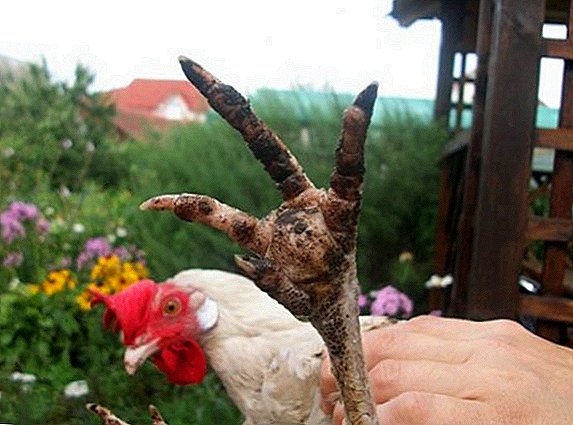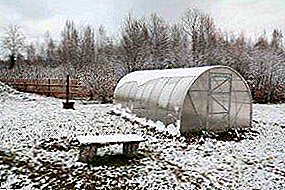
Growing vegetables in a greenhouse - simple and effective way provide your family with valuable and useful products. Most farm owners uses greenhouses and greenhouses in the spring and autumn period, prolonging the harvest until frost.
However, a warm shelter equipped according to the rules. will help to collect fresh vegetables even in winterwhen vitamins are especially needed. The greenhouse will allow you to earn on growing vegetables in the cold season, when the demand for them is especially high. How to grow vegetables in a greenhouse in winter, consider below.
Greenhouse requirements
How to equip greenhouse for growing vegetables in winter? Constructing a year-round greenhouse, it is important to observe all the conditions for successful plant growth: providing the right temperature and humidity, the amount of sunlight, the possibility of airing. At the same time, it is necessary to calculate the cost of heating and lighting the greenhouse so that they do not cover the benefits of winter vegetables.
Year-round greenhouse must have a solid foundation. To ensure the desired height for plants, you can slightly deepen the structure. This little trick will help save on heating and not lose the necessary natural light.
It is best to grow vegetables in a medium-sized greenhouse, up to 20 m long and 2.5-3 m wide. Optimum roof construction - single pitch. The northern wall can be laid out with slag stones or a wooden bar, protecting the plants from the winter wind. A greenhouse must have a vestibule and double doors. Comfortable needed air vents for airing.
Most often capital greenhouses do on a welded frame with a corrosion-resistant coating. Such a foundation will last for many years, the greenhouse will be solid and reliable. As a coating, you can use dense polyethylene or tempered industrial glass. But the most expensive and high quality material - cellular polycarbonate. It transmits light well and retains heat even in the most severe frosts.
 For heating fit pipes laid on both sides of the greenhouse. The heat source will be electric boiler. You can heat the structure with modern wood-burning stoves that save fuel.
For heating fit pipes laid on both sides of the greenhouse. The heat source will be electric boiler. You can heat the structure with modern wood-burning stoves that save fuel.
Increase the temperature inside the greenhouse will help and biofuels - manuremixed with straw. The mixture unfolds under the top layer of soil. Biofuel is suitable for growing cucumbers, radishes and other crops that are particularly demanding to heat.
Selection of vegetables
In the winter greenhouse can grow any crops, from popular tomatoes to head of lettuce and spicy herbs. Among the most popular and fruitful vegetables:
- cucumbers;
- tomatoes;
- radish;
- cabbage lettuce;
- eggplants;
- Bell pepper;
- different varieties of cabbage;
- zucchini.
It should be borne in mind that crops have different requirements for humidity and temperature, so they need to be placed in separate greenhouses. For example, tomatoes and sweet peppers require moderate moisture (not higher than 60%) and frequent airing. This mode is detrimental for cucumbers, which need a moist and hot atmosphere.
In the cold season, the greenhouse effect with high humidity is easier to maintain.
Choosing varieties it is necessary to give preference to hybridscultivated specifically for closed ground. These plants have a shorter growing season; they do not require pollination by insects. Most greenhouse varieties have good yields and pest resistance.
Seedling preparation
Some gardeners buy seedlings on the markets and other farms. But grow your own seedlings from seed much more profitable. In addition, the process can be started at any time, which will ensure a year-round harvest.
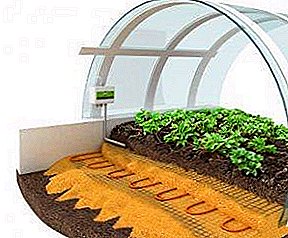 It is better to grow seedlings in a single greenhouse or in a house. Seed germination conditions are different. from those to which adult plants exist. In some cases, a lower temperature or higher humidity is required. In one greenhouse, you can place seedlings of different crops with similar requirements for farming.
It is better to grow seedlings in a single greenhouse or in a house. Seed germination conditions are different. from those to which adult plants exist. In some cases, a lower temperature or higher humidity is required. In one greenhouse, you can place seedlings of different crops with similar requirements for farming.
If there is no opportunity to organize a greenhouse for seedlings, seeds can be germinated on a separate rack in the common room, located as close as possible to the lamps. Seeds can be germinated in peat cups, but this method is not suitable for eggplants and other crops with a weak root system. For year-round cultivation recommended conveyor method.
Seeds are sown every 2 weeks, which makes it possible to obtain uneven-aged seedlings. If different cultures are planted, after a year they are recommended to alternate. Eggplant seedlings are planted in the places occupied by tomatoes, and cucumbers are replaced by radish or zucchini.
This technique does not deplete the soil. The first sowing can begin in January. Depending on the growing season of a particular plant, the seedlings will be ready to transplant in 3-5 weeks after sowing seeds.
Soil and fertilizer
How to grow vegetables in the greenhouse all year round? Vegetables need light, not too acidic soils. For most crops, a mixture of garden soil, sand and peat is suitable.
Before laying in the greenhouse the primer needs to be calcined or decontaminated using an aqueous solution of copper sulphate. This treatment kills harmful microorganisms and insect larvae.
After treatment, ashes can be applied to the soil or a complex of mineral fertilizers. The mixture is carefully loosened and distributed among the ridges. In the greenhouse you can organize both ground and rack cultivation. Shelving suitable for radish, head of lettuce and other small crops. Some vegetable growers successfully grow tomatoes and zucchini on the shelves.
Indoor soil is quickly depleted, so the plants in the greenhouse must be constantly fertilized. In the soil, rotted compost or complex mineral fertilizers are applied. This treatment is repeated every 2 weeks, before dressing the soil should be loosened and weeds removed. During the period of active growth of seedlings, special attention should be paid to nitrogen fertilizer, from time to time plants can feed with copper-containing drugs.
Care features
In winter, you need to maintain an average daily temperature of 18 to 22 degrees. Overheating is bad for tomatoes, eggplants and sweet peppers, and a cold snap can have a detrimental effect on radishes and cucumbers. On frosty days, greenhouses are not ventilated, when the outside temperature rises, the vents should be opened 1-2 times a day.
Vegetables in the greenhouse water 2-3 times a weekwhen the ground dries out a little. It is advisable to use water of the same temperature as the air in the greenhouse. Cold water can cause shock and slower plant growth.
 With the growth of the plant stems must be tied up. Cucumbers need special supports with mounting on the roof of the greenhouse. With their help, the stems of plants can be sent in the right direction, which is especially convenient for rack growing.
With the growth of the plant stems must be tied up. Cucumbers need special supports with mounting on the roof of the greenhouse. With their help, the stems of plants can be sent in the right direction, which is especially convenient for rack growing.
With the beginning of the formation of fruits it is recommended to remove the lower leaves on the stems. Excessive green mass prevents the development of fruits. In addition, this technique will improve air exchange and access of sunlight, the plants will not be affected by pests and fungi.
In the greenhouse important to maintain the atmospherefavorable for plants. The humidity level will help increase the watering of the heating and floor pipes with water, as well as the placement of open tanks in the room. For the successful ripening of tomatoes in the greenhouse, you can put the tanks with an aqueous solution of mullein. Good increase humidity and hot water barrels, besides, they additionally heat the room.
With conveyor cultivation, harvesting takes place all year round. In early summer and late autumn, preventive treatment of the premises is recommended, with partial replacement of the soil and thorough washing of all surfaces. After airing and fertilizing, a new stage of planting begins.
In this area, it is more expedient to extend the summer period until the end of October and practice early planting in heated ground. Using properly selected varieties of vegetable crops, you can achieve a good harvest.
Simple innovations in the construction of greenhouses for growing vegetables all year round, in the video below:



